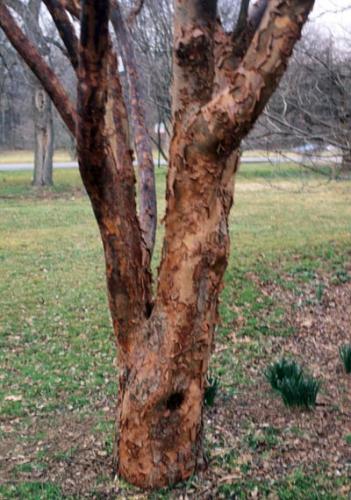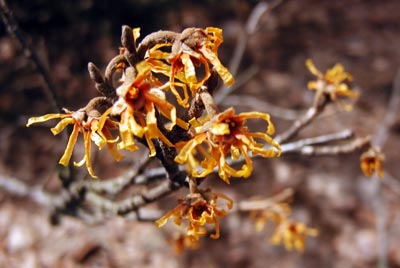Colorful plants for Michigan in the winter
Landscape plants can still bring color to your landscape in the winter and attract wildlife.

The winter landscape of leafless trees and dried seed heads from last season’s perennial flowers seems far removed from summer’s colorful show. Just because days are cold and often gray does not mean the winter landscape cannot provide colorful displays and still entice birds to visit your plants.
Blanketing snow on branches of evergreens such as hemlocks, spruces, pines, junipers, arborvitae, boxwoods and rhododendrons brings depth and warmth to a cold day. These plants provide varying shades of greens and blues and can provide the background to display plants with lighter colored bark. The unique bark on sycamore, Japanese stewartia and Kousa dogwood trees have mottled patches of creams, light green and copper colors. Cornus sericea, a shrub-type dogwood, displays a mass of twigs of reds or yellows. Other trees that Michigan State University Extension recommends that add interest and beauty to the winter landscape include paperbark maple’s peeling copper-colored bark and the varying shades of red bark on cherry trees such as chokecherry, Prunus maackii and Tibetan cherry, Prunus serrula.

Paperbark maple. Photo credit: John Ruter, University of Georgia, Bugwood.org
A number of plants have berries that persist on dormant plants during the winter months. These berries not only brighten a landscape with their color, but bring life to frigid days, drawing in hungry birds. One plant native to Michigan that stands out is Michigan holly, Ilex verticillata, also known as winterberry. It is a holly that loses its foliage in winter, but retains gorgeous red berries providing food for overwintering birds, including robins. The native highbush cranberry viburnum, Viburnum trilobum, is another plant with bright red fruit that last well into the winter. Even poison ivy with its white berries attracts robins, cedar wax wings, bluebirds, warblers and thrushes. Other fruit found in Michigan’s winter landscapes include the bluish juniper berries, reddish clumps of berries on sumacs and the many varieties of crabapples.
A discussion on winter color is not complete without a mention of a plant that should be coming into bloom now, the Chinese witch hazel, Hamamelis mollis. The flowers vary on the different cultivars from yellows to orange to red with graceful, strap-like petals. Yes, it blooms in February, but beyond the flowers, many cultivars have a fragrance that challenges lilacs. At Michigan State University’s Hidden Lake Gardens, an arboretum near Tipton, Mich., a witch hazel flowering in February takes your breath away as its fragrance carries across the frozen landscape. A native relative is the American witch hazel, Hamamelis virginiana, found throughout Michigan that blooms in late fall.

Chinese witch hazel. Photo credit: The Dow Gardens Archive, Dow Gardens, Bugwood.org
Whether you are looking to add color to your landscape or enjoy native plants in forests natural settings across the state, there are many interesting plants to bring color to winter.



 Print
Print Email
Email